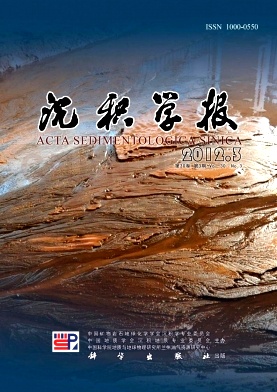Neogene Sedimentary Succession in the Zanda Basin, Southwest Tibet
- Publish Date: 2012-06-10
-
Key words:
- the Zanda Basin /
- Neogene /
- sedimentological facies /
- sedimentological evolvement
Abstract: The Zanda Basin is a Neogene rifted basin in South Tibet. On the basis of previous vertebrate palaeontology, palynology, magnetostratigraphy, and ESR dating research, the age interval can be bracketed between ~9.2 and 1 Ma through strata correlation. Based on lithology, paleocurrent measurements and provenance analysis, this paper studies sedimentological succession of the Neogene Basin, and three sedimentological phases are identified: initial rift filling phase(9.2~7.8 Ma), stable subsidence phase(7.8~2.6 Ma) and subduction phase(2.6~1.7 Ma). During 9.2~7.8 Ma, the braided river lithofacies with an SWS paleocurrent predominates in the Lower Tuolin Formation, and the sediment sources are mainly in the northesatern side of the basin, the sedimentary centrer is located at the southside of the basin. Then, the lacustrine lithofacies dominates in the basin, accompanied by lakedelta lithofacies, with a basincentric paleocurrent in the Upper Tuolin Formation from 7.8 Ma to 2.6 Ma, the lake area reach to maximum, and the source of the sedimentary basin comes from mountains surrounding the basin margin. During 2.6~1.7 Ma, the alluvialfan lithofacie dominates, with a SES paleocurrent in Xiangz Formation, implying the the source material are from southwestern side of the basin, and the facies change from fine lacustrine to coarse alluvial fan rapidly. The Pleistocene Gongba Formation is in angular unconformity with the underlying Xiangz Formation, implying end of the sedimentary basin. In summary, the lithofacies compose of braided river, lacustrine and alluvialfan, dominated by lacustrine lithofacies. Paleocurrent directions change from SW (lower part) to SE (upper part), with a basincentric direction in the middle part. Furthermore, regional geography changes from northeast high, southwest low to northwest high, southeast low, and the sedimentary central is located at the south margin of the basin. After 1.7 Ma, the Pleistocene Gongba Formation appears and implies disappearance of the basin. It indicates that the riftsag basin in southern Tibet rises firstly, forming a paleolake, and then falls abruptly, dating eastwest extensional tectonic evolvement when the plateau attains its maximum elevation.
| Citation: | Neogene Sedimentary Succession in the Zanda Basin, Southwest Tibet[J]. Acta Sedimentologica Sinica, 2012, 30(3): 431-442. |






 DownLoad:
DownLoad: